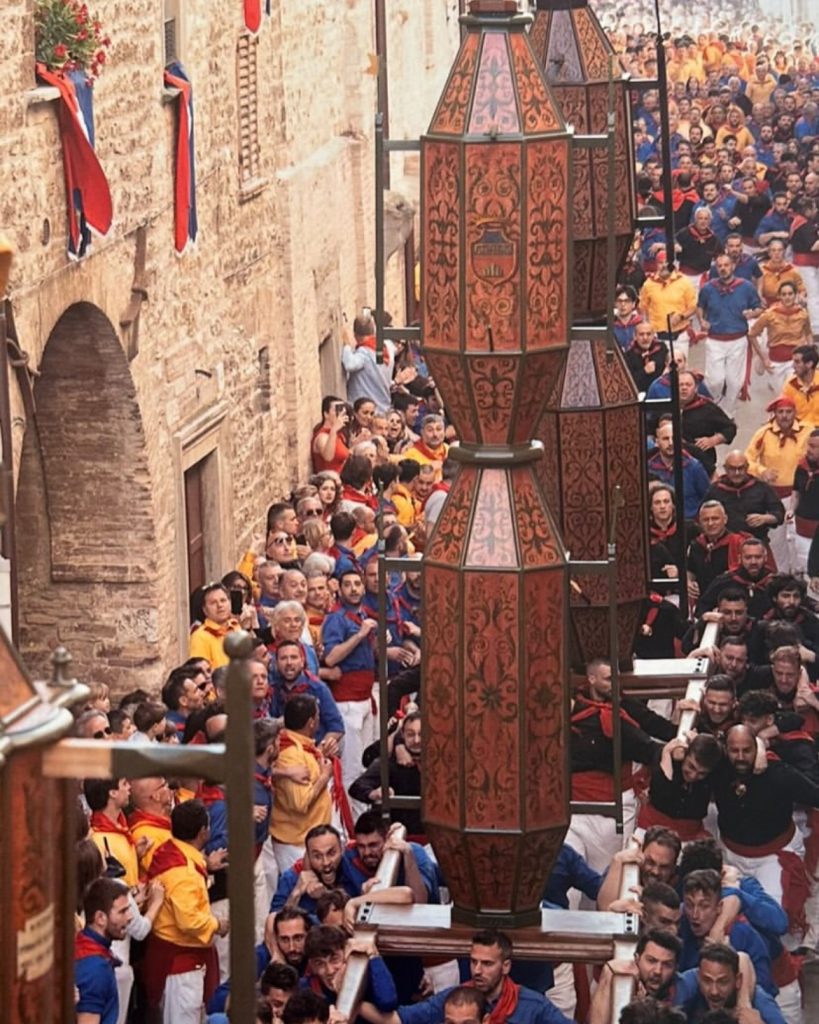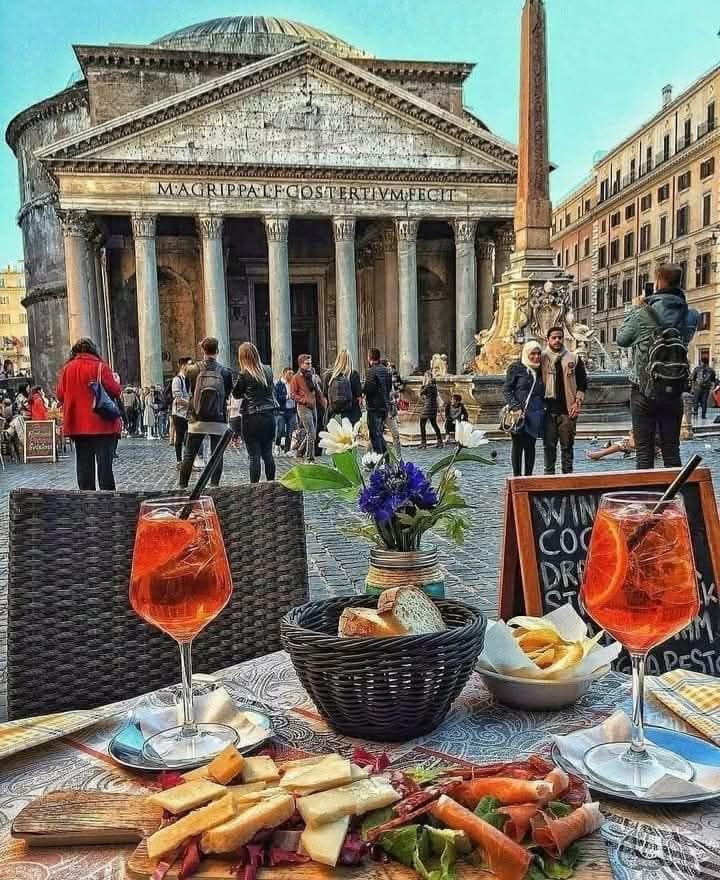In Italy, the word “authentic” has become one of the most overused and misunderstood terms in the travel industry. Every shop, tour operator, and experience seems to be offering some version of “the real Italy.” But what many travelers don’t realize is that the desire for authenticity has itself become a commodity. Businesses know that travelers want to feel like they’re immersing themselves in Italian culture, and they’re happy to sell that illusion, often in pre-packaged, overpriced, and highly curated forms.
The truth is that many of these so-called “authentic” experiences are far from traditional. If anything, they can be the least genuine part of your trip. From staged cooking classes to factory-made leather goods, these experiences are often tailored not for cultural depth but for mass appeal. In this guide, I aim to shed light on these tourist traps disguised as authenticity and offer better alternatives, so you can experience the real Italy—even if it’s not always Instagram-perfect.
1. Overhyped Cooking Classes in Tourist Centers

One of the most sought-after activities for visitors to Italy is joining a traditional cooking class. On paper, it sounds like a dream: learning to make handmade pasta or pizza from a local chef in a rustic kitchen. However, many of these experiences in cities like Florence, Rome, or Venice are designed with volume in mind. These classes tend to follow the same script, regardless of region, and are often taught by people who aren’t professional chefs but have been hired to deliver a basic, cookie-cutter experience.
These classes may check off the right boxes—rolling dough, pouring wine, posing for photos—but they often fail to reflect regional differences that are the heart of Italian cuisine. You might find yourself learning how to make tagliatelle in Naples or pizza in Florence, which makes for a fun evening but doesn’t reflect local food traditions. Worse, some of these classes use pre-prepared ingredients or skip techniques entirely for the sake of speed.
If you’re truly interested in Italian cooking, look for small, family-run workshops or agriturismos in rural areas. There, you might join a grandmother in her own kitchen, harvest your own ingredients, and learn dishes that are native to the region. It may not have the polished look of a tourist brochure, but it will give you a genuine taste of Italian culture.
This is however not the worst thing that can happen to you in Italy. My partner attended one class and she came back to the hotel room happy and tipsy! It’s just not authentic
2. “Farm-to-Table” Tours That Aren’t Really Farms

A growing number of travelers are drawn to the idea of reconnecting with the land and supporting sustainable practices, which is why “farm-to-table” experiences are heavily promoted. But just because a place is set in the countryside doesn’t mean it’s a working farm. In many cases, these are glorified event venues dressed up as rural retreats, offering curated tastings and photo ops rather than an educational or immersive experience.
These venues often present themselves as rustic farms but function more like boutique hotels. You may walk through a field of grapevines, but the produce served often isn’t grown on-site. Some even import olive oil or cheese from other regions while telling a carefully scripted story about their “family tradition.” It’s a performance designed to match what tourists expect rather than what’s real.
Instead, consider visiting certified agriturismi or local cooperatives that allow you to participate in real farm work, from harvesting grapes to making cheese. These places are less polished but far more enriching. You’ll get a behind-the-scenes view of rural life and a better appreciation of the connection Italians have to their land.
2. Overpriced Gondola Rides in Venice

Gondola rides in Venice are often marketed as the pinnacle of romance and tradition. While it’s true that gondolas have been a part of Venetian culture for centuries, their modern use has very little to do with everyday life in Venice. Today, gondoliers cater almost exclusively to tourists, charging high prices for short rides that rarely stray from overcrowded routes.
You might imagine floating quietly down back canals while a gondolier serenades you, but the reality often involves traffic jams on the Grand Canal and gondoliers more focused on their phones than your experience. The prices are steep, usually exceeding 80 euros for a 30-minute ride, and many travelers walk away feeling disappointed and overcharged.
If you want to experience Venice like a local, try taking a traghetto, which is a standing gondola used by Venetians to cross the Grand Canal for just a couple of euros. Alternatively, explore the canals by vaporetto or wander on foot through quiet neighborhoods like Cannaregio or Dorsoduro. These options offer a more intimate and less commercial view of Venice.
4. Mass-Produced “Handmade” Souvenirs

Italy is known for its high-quality craftsmanship—leather in Florence, glass in Murano, masks in Venice. But walk through any popular tourist district, and you’ll find countless shops selling mass-produced items masquerading as handmade. Many of these products are imported from other countries and sold at inflated prices to unsuspecting visitors.
In Florence, for example, dozens of shops claim to sell handmade leather goods, yet many source their inventory from the same overseas suppliers. In Venice, factory-made masks with glitter and feathers are passed off as artisanal creations. These items may look pretty, but they carry none of the authenticity or craftsmanship they claim to represent.
To find the real deal, seek out certified artisan workshops or cooperatives that allow you to meet the craftspeople behind the work. Look for items that have imperfections or unique details—signs that they were made by hand. It might take a bit more effort, but you’ll walk away with something meaningful and truly Italian.
5. “Traditional” Festivals That Are Fabricated for Tourists

Italy is home to countless vibrant festivals with deep cultural and historical roots. Unfortunately, some towns have begun creating new “festivals” or heavily modifying old ones to draw in tourist crowds. These staged events often lack community participation and feel more like a theatrical performance than a celebration of local heritage.
In some cases, historical reenactments are turned into theme-park spectacles, complete with actors in rented costumes and choreographed parades. Local traditions are often sidelined in favor of what will photograph best or attract the most foot traffic. While these events may be entertaining, they don’t offer much in the way of cultural understanding.
For a more meaningful experience, research festivals that are genuinely supported by the community, such as the Palio di Siena, the Festa dei Ceri in Gubbio, or the Infiorata in Spello. These celebrations are often chaotic, less polished, and deeply rooted in local identity. They might not cater to tourists, but that’s precisely what makes them worth attending.
6. Wine Tastings at Big Commercial Wineries

Wine tasting in Italy should be about more than just sipping a few glasses; it’s a chance to understand the land, the people, and the centuries-old traditions behind each bottle. However, many of the larger commercial wineries have turned tastings into assembly-line experiences, offering quick pours and rehearsed explanations designed for tour bus groups.
These wineries often focus on quantity over quality, catering to hundreds of visitors a day. You might hear the same script delivered in multiple languages, paired with generic food samples and a push to buy overpriced bottles or join a mailing list. While the setting may be beautiful, the experience often feels impersonal and commercial.
Instead, opt for smaller, family-run vineyards in regions like the Langhe, Montepulciano, or Umbria. These producers are usually passionate about their craft and eager to share their knowledge. You might end up in a modest tasting room or even a farmhouse kitchen, but the connection you make will be far more lasting.
7. Dining at “Authentic” Italian Restaurants with English-Only Menus

It’s easy to be drawn into a restaurant that advertises “authentic Italian cuisine” in big letters, especially when the menu is conveniently available in English. But often, these places are geared entirely toward tourists and serve a version of Italian food that locals wouldn’t recognize. Think overcooked pasta, frozen lasagna, and dishes that mix regional styles indiscriminately.
These establishments usually rely on foot traffic, not quality, and use signage, hosts, and multilingual menus to draw in customers. The food is often bland, overpriced, and lacking the nuance that defines real Italian cooking. Locals tend to avoid these spots altogether, leaving them filled almost entirely with tourists.
To find real Italian food, skip the places that display their menus in five languages or have photos of the dishes. Instead, look for small trattorias or osterias with handwritten menus, daily specials, and locals at the tables. Even if the menu isn’t translated, the staff will usually help you, and the food will be infinitely more satisfying.
8. “Authentic” Gelato That’s Anything But

Gelato is one of the pure joys of visiting Italy, but not all gelato is created equal. In tourist-heavy areas, it’s common to see shops offering brightly colored, fluffy gelato stacked in tall, decorative mounds. These eye-catching displays often lure in crowds, but they usually signal that the gelato is industrially made using powders and artificial flavors.
Authentic gelato should be dense, muted in color, and stored in covered metal tins to maintain temperature. Real fruit flavors should taste like the fruit, not like candy, and the texture should be creamy but not overly soft. Unfortunately, many tourists are drawn to the spectacle and miss out on the depth of true artisan gelato.
Seek out gelaterias that emphasize natural ingredients, local sourcing, and traditional techniques. In cities like Bologna or Rome, look for places like Gelateria del Teatro or La Sorbetteria Castiglione. A good rule of thumb: if the banana flavor is grayish, not yellow, you’re in the right place.
8. Staying in “Traditional” Italian Villas That Are Actually Theme Hotels

The fantasy of staying in a charming Italian villa overlooking vineyards or perched on a coastal cliff is deeply rooted in many travelers’ imaginations. But this dream can sometimes turn out to be a cleverly curated illusion. Many so-called “traditional villas” are, in fact, modern constructions or heavily renovated properties that cater specifically to international guests, offering comfort and familiarity rather than genuine cultural immersion.
These properties often bear only a surface resemblance to traditional Italian homes. Inside, you may find bland decor, international-style buffets, and staff trained to cater to expectations shaped by Hollywood or social media, rather than Italian tradition. While there’s nothing wrong with comfort, these “authentic” experiences often feel sterile, disconnected from the life and culture around them. They’re designed for travelers to feel at home—not for them to understand what it truly means to live in Italy.
For a more honest experience, consider staying at a family-run agriturismo, a heritage B&B, or a guesthouse in a medieval hill town. These places may not offer infinity pools or concierge services, but they provide a connection to the local way of life. You might share a home-cooked meal with your hosts, learn about the region’s history, or simply enjoy the slow rhythms of rural Italian living.
9. Participating in “Authentic” Gladiator Training or Roman Reenactments

Rome is a city overflowing with history, and it’s easy to get swept up in the drama of its imperial past. That’s precisely why you’ll find a slew of “gladiator schools” and reenactment experiences promising to teach you how to fight like a Roman warrior. While these might sound like immersive historical experiences, they often fall flat—more costume party than cultural education.
These experiences are generally tailored to tourists who are more interested in photo ops than historical accuracy. Some are set up on the outskirts of the city in warehouse-like facilities or kitschy outdoor arenas. The instruction, such as it is, rarely goes beyond a superficial introduction to weapons and combat poses. The result is more like live-action role-play than an opportunity to understand ancient Roman history.
A better option is to explore Rome’s ancient past through a guided walk with a trained archaeologist or historian. Visiting the Colosseum, Roman Forum, and Palatine Hill with someone who can unpack the complexities of Roman life is far more enriching. You’ll gain a deeper respect for the culture and brutality of Roman society—without having to swing a plastic sword.
10. The “Tuscan Dream” Tours That Feel Like Movie Sets

Many travelers dream of golden sunsets over rolling hills, medieval villages perched on hilltops, and vineyard lunches under pergolas dripping with wisteria. This is the so-called “Tuscan dream,” and while it is rooted in reality, the packaged tours that promise to deliver it often miss the mark. These trips are frequently over-scheduled, offering only rushed visits to a handful of photogenic towns with barely enough time to take a picture before being whisked off to the next stop.
What’s worse, many of these tours flatten the diversity of Tuscany into a one-size-fits-all itinerary. You might visit San Gimignano, Pisa, and a wine estate all in a single day, spending more time on a bus than in any one place. The meals are often group affairs at large estates that serve the same menu to everyone, with little regional specificity. The experience becomes more about box-ticking than about savoring the culture and landscape.
To truly enjoy Tuscany, slow down. Rent a car, base yourself in one of the lesser-known towns like Pienza or Cortona, and explore at your own pace. Walk through olive groves, chat with shop owners, and spend long lunches in village squares. Tuscany’s magic lies not in its postcard perfection, but in its rhythm and richness—something no packaged tour can truly replicate.
11. Taking a “Real” Vespa Tour on Unsafe, Congested Roads

Zooming through the Italian countryside on a Vespa is often portrayed as the height of freedom and romance. There’s no denying that riding a scooter through winding rural roads can be exhilarating, but many tourists underestimate the risks involved—especially when signing up for so-called “authentic” Vespa tours. These excursions often prioritize aesthetics over safety and fail to properly assess riders’ skills and experience.
Many participants in these tours have little or no experience with scooters, and the learning curve can be steep. Combine that with busy roads, unfamiliar traffic rules, and aggressive Italian drivers, and you have a recipe for stress—or worse, injury. Helmets and insurance are often provided, but the tours may downplay the realities of navigating tight, chaotic roads where mistakes can have serious consequences.
Instead of hopping on a Vespa, consider a small-group van tour through the countryside, or better yet, explore by bicycle. Italy has many quiet backroads and scenic cycling routes, especially in regions like Puglia, Umbria, or Emilia-Romagna. You’ll get the wind in your hair and the thrill of movement—without the risk of white-knuckled driving on a machine you barely know how to operate.
12. Truffle Hunting “Experiences” With Planted Truffles

The idea of heading into misty woods with a skilled hunter and their truffle-sniffing dog sounds irresistibly romantic—and in some places, it can be. But as truffle hunting has grown in popularity, so too has the number of staged experiences that are more performance than tradition. It’s not uncommon to find “hunts” where the truffles have been secretly planted in advance, the dogs are trained for show only, and the outing lasts just long enough to get a few photos.
These tours are often conducted on private land with little or no connection to genuine truffle production. The guide might deliver a scripted speech about truffle varieties, and the dog might magically “find” a truffle five minutes after you begin walking. In the end, you’re offered a taste of truffle-infused oil or pasta, often made with synthetic flavorings rather than the real thing.
If you want the real experience, seek out licensed truffle hunters in Piedmont, Umbria, or Le Marche—regions with a long tradition of truffle gathering. Many of these professionals come from families that have been foraging for generations, and their dogs are skilled companions, not stage props. A genuine hunt might be less predictable, but it’s also more rewarding—and far more flavorful.
Conclusion: Seek the Real Italy Behind the Curtain
The desire to experience the “authentic” Italy is completely understandable. After all, Italy is a place of deep tradition, rich culture, and powerful beauty. But in an age where authenticity has become a sales pitch, it’s more important than ever to question what’s real and what’s being packaged for your consumption. Not every smiling chef, crumbling villa, or bubbling pot of sauce is what it appears to be.
The good news is that the real Italy still exists—quietly, proudly, and without fanfare. It’s in the shop that closes early for lunch, the old man tending his vines behind a crumbling stone wall, the baker who won’t sell you a croissant because it’s not what you really want in Italy. These moments may not come with a certificate of authenticity or a perfect Instagram frame, but they are far more meaningful than anything a tour brochure can promise.
So slow down. Ask questions. Wander off course. Skip the polished version of Italy sold to the masses and seek out the version still lived by its people. That’s where the real magic lies—and it’s far more satisfying than any staged experience ever could be.

